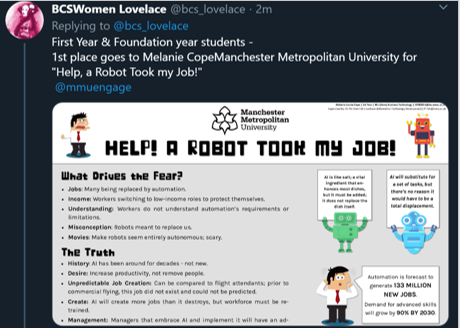
Despite progress over the years, women are still significantly underrepresented in tech. Systemic gender barriers – such as unconscious bias, lack of access to education, and cultural norms – can make it difficult for women to break into the tech industry. But how do we break down these barriers?
Follow our simple step by step guide for answers. Whether you break down one barrier or obliterate them all, any progress is positive.
Step one: Identify the barriers for women in tech.
First and foremost, we need people to recognise that barriers exist. How can we fix something if we’re unaware of its existence?
Unconscious and conscious bias due to cultural and societal norms are barriers that have been growing and growing over time. Whilst these biases are not always intentional, they impact education, career choices, and decisions made in the hiring process.
Women are often subjected to gender stereotypes that suggest they’re not as competent or committed as men in the tech industry. In fact, 70% of women in tech feel like they need to work harder and prove themselves because of their gender. This is especially true for pregnant women who feel the need to go “above and beyond” normal standards, as well as hide any sickness for fear of appearing unreliable. This can lead to discrimination and self-policing when it comes to hiring, promotions and (you guessed it) pay.
As McKinsey points out in a 2023 article, reducing the isolation of women in tech roles, introducing broader support networks, supportive HR policies, and effective sponsorship are all ways to actively addresses the pain points and needs of women. This first suggestion is particularly interesting, especially when you consider 45% (of 185 female job hunters surveyed) would be put off from applying to a job if the company had no female employees in management positions.
According to a PwC report, only 5% of leadership positions in the technology industry are held by women, indicating a varying gender gap at each stage of career progression in tech. Not only do female employees lose out on role models, but a lack of strategy around increasing diversity prevents people who don’t identify as a white CisHet man from playing a full role in shaping the future of our society – something that is desperately needed to help address issues of bias, abuse and the widening of the digital divide.
Firms are also 33% more likely to benefit from industry-leading profitability if their executive teams represent more cultural and ethnic minorities.
Step two: Let women know they can change the world.
Did you know that 92% of 18-25-year-old women can’t name a famous woman in tech?
34% said they didn’t learn enough about tech at school, and 22% reported that they were steered away from such subjects at school or college by teachers.
Role models and representation play a huge part in inspiring people to pursue particular career paths – and when it comes to the tech industry, this is no different. Research has also shown that young women are searching for roles that give them purpose (46%), enable them to make a positive change in the world (41%), do rewarding work (41%), and are looking for openings that give them the opportunity to make technology more inclusive to women (40%).
A study by the Learning and Work Institute said the UK was facing “a looming digital skills crisis” caused by the falling numbers of young people taking IT courses, with young women accounting for just 17% of A-level entrants in IT subjects.
So rather than actively discouraging women from pursuing technology, we should be looking at ways to speak their language – and we need to be having those conversations before any bias is built in to suggest IT isn’t “women’s work”. This includes dissolving the image of a hooded male sat at a computer coding in darkness, and instead, start to illustrate the possibilities of technology and how it will improve the world. We also need to make sure women are in tech roles that matter. As McKinsey points out:
“Many women, in fact, work in the fastest-declining tech roles, such as systems administrators and programmer analysts, which are also the roles that have been disproportionately affected by the recent waves of tech layoffs. Companies should focus on hiring and training women to assume tech roles that are gaining importance in the marketplace and society, such as product leads, machine learning engineers, and AI experts.”
Step three: Increase diversity in hiring.
Companies should actively seek to increase diversity in their hiring processes – through changing the language in job descriptions to make them more inclusive, advertising job openings on several different platforms, providing adjustments such as sending the interview questions in advance, and implementing blind recruitment practices that remove identifying information such as names and genders from CVs.
Unconscious bias training can also help hiring managers look beyond gender stereotypes during the recruitment process.
Step four: Create a supportive and inclusive work environment.
Creating an inclusive environment that values diversity, promotes equality and encourages women to share their perspectives can help other women to feel more comfortable and confident in pursuing careers in tech. Providing mentorship programs, active sponsorship – in the form of advocating for those in the minority and opening doors to sponsors’ networks – and opportunities for career development are all great contributors.
Adopting flexible working policies is also an effective way to cater for individual needs. Not only does it offer a blanket benefit to all employees, so no one person or group feels singled out and the risk of proximity bias is reduced, it also takes into consideration a wider variety of personal needs – such as a parent’s need to juggle childcare, unpaid care responsibilities for elderly parents, religious accommodations, health appointments or considerations, and disability considerations.
If it is possible for your organisation to implement such changes, you are opening yourself up to a more engaged workforce, better retention rates of top talent, and more satisfied employees.
It’s not about giving one group of people an advantage over another; it’s about recognising different circumstances and the exact resources and opportunities needed to help everybody reach equal opportunities. As Caroline Belden (Writer, ‘The Inclusion Solution’) phrases so perfectly: “Equality is leaving the door open for anyone who has the means to approach it; equity is ensuring there is a pathway to that door for those who need it.”
Step five: Address the gender pay gap.
The 2021-22 gender pay gap report found that women in technology only occupied 23.5% of the top-paying jobs. On the plus side, the gap has reduced compared to 2020-21 when it stood at 17.3%.
Amanda Blanc, Aviva’s CEO, has estimated that it will take another 30 years for the pay gap to close if we are to continue at the “frustratingly slow” rate we are currently at. In McKinsey’s 2021 ‘Women in the Workplace’ report, they found that for every 100 men promoted to manager, only 86 women achieved the same. This disparity is one of the reasons the gender pay gap is so wide –females are missing out on being promoted to more senior roles with higher pay and are often “stuck” in more administrative roles with less career progression opportunities.
As well as looking at ways to increase female representation at all levels in the STEM sector, firms should conduct regular pay audits and provide salary transparency so we – as a sector – can continue to raise awareness and, where relevant, accountability for our lack of progress.
Step six: Advocate for policy change.
Policy changes play a significant role in breaking down systemic barriers for women in tech. For example, policies that promote paid parental leave, flexible work schedules, and affordable childcare can help support women in tech who may have caregiving responsibilities. Additionally, policies that address pay equity and workplace harassment can help create a more equitable workplace for those disproportionately affected.
If policy change is to succeed, we need to also focus on cultural change.
In the same way a woman’s commitment to her work can be questioned after having children, 73% of working fathers felt there was a “stigma attached to them taking extended paternity leave, with nearly all respondents (95%) agreeing that workplace culture needed to be transformed to normalise men taking time off.” If we want to dismantle inequalities in the workplace, we – the people – need to address our internalised sexism when it comes to the roles men and women are “suppose” to play.
All new parents should be provided proper cover and pay while they are off, phased returns to work where required, and “keep in touch” days so they feel more in the loop if/when they do return. Only once men receive equal opportunities here will women stop shouldering the discrimination that comes with being a women presumed capable of having children and therefore a potential burden to an organisation.
That advocacy starts with men asking for these policies.
No advocating = no acknowledgment for change.
Step seven: Consider entry points to cast a wider net.
Without inspiration and encouragement, we won’t get very far.
As mentioned in step two, we need to introduce the possibilities of STEM to girls when they are young. Excite them about what a STEM career looks like and offer them encouragement if they show signs of interest. This effort starts all the way back in nursery and should be continued up until they leave school.
Once they step into the big wide world, scholarships, apprenticeships, and training programs can provide women with the necessary skills and education to pursue careers in tech. Such programs provide networking opportunities, career counselling, and access to mentors. Having female mentors and role models who have succeeded can provide guidance, support, and inspiration to women.
Fortunately, the UK government has made significant investments in the apprenticeship system, offering financial incentives to employers who take on apprentices whilst funding the training – so something to consider if you are not already doing so.
It’s also worth remembering that it’s never too late to change your career path.
There is a misconception that you have to look like Elon Musk or code like Zuckerberg to make it, when in fact, STEM is an industry with a myriad of opportunities that benefits from transferrable skills. Organisations would do well to seek talent from untapped pools, offering training programs that welcome different backgrounds and give them the tools they need to continue building up their tech skills.
At GlobalLogic, we welcome and encourage career changers through the GlobalLogic Academy. This initiative runs twice a year, equipping attendees with the skills needed to become successful IT consultants.
Are you an aspiring career changer? Contact careers@uk.globallogic.com to find out more.
So, what’s next?
Breaking down systemic barriers for women in tech will require a multifaceted approach and won’t happen overnight. By working together to address these barriers, we can create a more diverse and inclusive tech industry that benefits everyone.
Technologists are designing our future. Join them.










